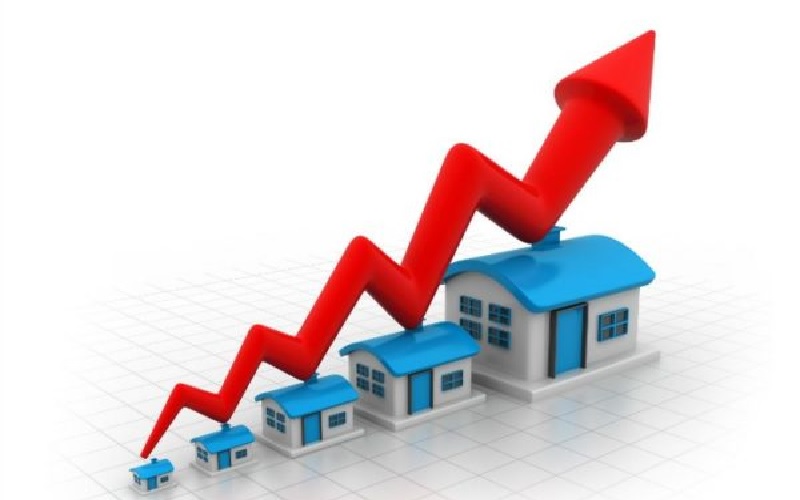The regime ruling Iran has recently approved the high priority “Tax on Repeat Housing Transactions” bill. The legislation has been submitted to the Majlis (parliament) to be administered into the country’s laws.
If passed, this bill will allow the government to impose a 60 percent tax on property sale if the owner sells the property within one year of purchasing it.
The goal of implementing this plan is to prevent “profit-seeking activities” in the housing market and to prevent the upward trend of housing prices. However, real estate experts say that this plan, like other restrictive measures approved by the government to prevent rising housing prices, will not yield any results. The reason is that the housing industry acts as a capital commodity in the Iranian economy, and its price follows the inflation rate in Iran, exchange rate fluctuations, and building materials. The price of housing also rises simultaneously with the growth of these markets.
Previously, the government of Hassan Rouhani approved a tax plan on vacant homes. After the plan was approved into law, however, it ultimately became entangled in complicated implementation processes.
Slow growth of housing prices
The latest statistics from January 2023 indicate that the average price per square meter of housing in Tehran is around 550 million rials per square meter (approximately $1,018), which indicates a 54 percent inflation rate. However, housing prices saw yet another hike coinciding with the increase in the dollar exchange rate.
Although there is no official and accurate data available to determine the exact rise in housing prices in the Iranian capital over the past year, websites that advertise property prices across the country can be consulted to realize the changes in the housing market.
Unofficial reports suggest that the average price of housing in Tehran reached around 700 million rials (approximately $1,296) per square meter by April 2023.
According to unofficial reports, the rise in housing prices from January to April in some areas of Tehran was 35 percent. This increase shows the inflation of the housing sector in Tehran for 2022 equaling 60 percent compared to these three months in 2023.
The wave of rising housing prices has also reached other cities in Iran and has brought the housing inflation rate to around 50 percent nationwide.
This is Iran’s fourth wave of housing price hikes in the past ten years. According to official reports, housing prices have increased 1,200-fold over the past 30 years.
When Ebrahim Raisi assumed office as president in 2021, the average price per square meter of residential units in the capital was around 310 million rials (approximately $574). In January 2023, the latest statistics reported by the regime’s Statistical Center show the calculated price per square meter of housing in Tehran at around 550 million rials (approximately $1,018), an increase of about 70 percent over 18 months.
Hollow promises
At the beginning of his tenure, Raisi promised to build four million residential units in his four-year tenure. A few months later, when Rostam Qasemi took over the Ministry of Roads and Urban Development, he hinted that the pledge to build four million homes was impossible.
Now, more than a year later and after the first prepayments have been collected from the registrants, there is no official completion time for the construction projects and no longer any talk of building a million homes annually.
Even Mehrdad Bazrpash, who replaced Rostam Qasemi as the Minister of Roads and Urban Development, began his post by referring to the government’s inability to provide 28,000 trillion rials (approximately $52 billion) for the construction of four million homes.
To implement this plan, the government placed heavy pressure on banks, which are already burdened with the obligations of other government orders, to provide low-interest loans. On the other hand, due to the rise in inflation, the fully completed price per square meter does not match what was promised.

Since the start of this initiative, Iran’s inflation rate has put pressure on the National Housing Plan, as the prices of building materials have also increased with inflation and the government’s calculations for affordable housing have been stuck in a deadlock.
Mojtaba Yousefi, a member of the Majlis Civil Commission, said that on average 51 percent of the country’s population are tenants.
On April 9, referring to the rising housing prices and rents, Yousefi told the semi-official ILNA news agency that the economy, especially the branch related to the minimum expenditure basket, cannot be controlled through directives and orders.
According to the data of the Statistics Center, in 2011 housing costs consisted of 34 percent of an average household budget, rising to 39 percent in 2017. This figure reached 47 percent in 2020.
According to social media ads, housing prices in northern Tehran have reached over 10 billion rials (approximately $18,520) per square meter in some areas.
In this regard, a February 24 report published by the semi-official Khabar Online website indicates that a full-mortgage 200-square-meter house in the Elahieh neighborhood of Tehran stands at 40 billion rials (approximately $74,000). Additionally, a social media post shows an advertisement for a 470 square meter house in Tehran’s Zaferanieh neighborhood with a price tag of 6.5 trillion rials, meaning over 10.3 billion rials (approximately $24,000) per square meter.
On May 9, the regime’s Sobhe-No newspaper wrote that in the Niavaran area rent costs are at $20,000 deposit and $3,000 monthly rates.
An Iranian economic reporter posted on Twitter: “For the first time in history, buyers are more than ten times the sellers [of land]. With these economic circumstances, everyone is looking to convert their rials into any other commodity. With none of the policies being implemented, including monitoring rental rates and taxing vacant homes, speculators are at ease.”
The sharp increase in housing prices in Tehran has led to an increase in rental and mortgage prices as well.